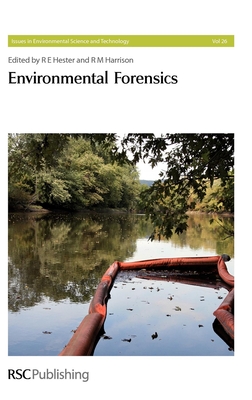Environmental Forensics

Environmental Forensics
'Environmental forensics' is a combination of analytical and environmental chemistry, which is useful in the court room context. It therefore involves field analytical studies and both data interpretation and modelling connected with the attribution of pollution events to their causes. Recent decades have seen a burgeoning of legislation designed to protect the environment and, as the costs of environmental damage and clean-up are considerable, not only are there prosecutions by regulatory agencies, but the courts are also used as a means of adjudication of civil damage claims relating to environmental causes or environmental degradation. As a result is the increasing number of prosecutions of companies who have breached regulations for environmental protection and in civil claims relating to harm caused by excessive pollutant releases to the environment. Such cases can become extremely protracted as expert witnesses provide their sometimes conflicting interpretations of environmental measurement data and their meaning. It is in this context that environmental forensics is developing as a specialism, leading to greater formalisation of investigative methods which should lead to more definitive findings and less scope for experts to disagree. Now a significant subject in its own right, at least one journal devoted to the field and a number of degree courses have sprung up. As a result of the topicality and rapid growth of the subject area, is the publication of this book - the 26th volume in the highly acclaimed Issues in Environmental Science and Technology Series. This volume contains authoritative articles by a number of the leading practitioners across the globe in the environmental forensics field and aims to cover some of the main techniques and areas to which environmental forensics are being applied. The content is comprehensive and describes a number of the key areas within environmental forensics - topics covered by the authors include: - Source identification issues - Microbial techniques - Metal contamination and methods of assigning liability - The use of isotopes to determine sources and their applications - Molecular biological methods - Hydrocarbon fingerprinting techniques - Oil chemistry and key compound identification - The emerging role of environmental forensics in groundwater pollution Additionally, the volume considers specific pollutants and long-lived pollutants of groundwater such as halocarbons which have presented particular
PRP: 737.80 Lei
Acesta este Pretul Recomandat de Producator. Pretul de vanzare al produsului este afisat mai jos.
664.02Lei
664.02Lei
737.80 LeiLivrare in 2-4 saptamani
Descrierea produsului
'Environmental forensics' is a combination of analytical and environmental chemistry, which is useful in the court room context. It therefore involves field analytical studies and both data interpretation and modelling connected with the attribution of pollution events to their causes. Recent decades have seen a burgeoning of legislation designed to protect the environment and, as the costs of environmental damage and clean-up are considerable, not only are there prosecutions by regulatory agencies, but the courts are also used as a means of adjudication of civil damage claims relating to environmental causes or environmental degradation. As a result is the increasing number of prosecutions of companies who have breached regulations for environmental protection and in civil claims relating to harm caused by excessive pollutant releases to the environment. Such cases can become extremely protracted as expert witnesses provide their sometimes conflicting interpretations of environmental measurement data and their meaning. It is in this context that environmental forensics is developing as a specialism, leading to greater formalisation of investigative methods which should lead to more definitive findings and less scope for experts to disagree. Now a significant subject in its own right, at least one journal devoted to the field and a number of degree courses have sprung up. As a result of the topicality and rapid growth of the subject area, is the publication of this book - the 26th volume in the highly acclaimed Issues in Environmental Science and Technology Series. This volume contains authoritative articles by a number of the leading practitioners across the globe in the environmental forensics field and aims to cover some of the main techniques and areas to which environmental forensics are being applied. The content is comprehensive and describes a number of the key areas within environmental forensics - topics covered by the authors include: - Source identification issues - Microbial techniques - Metal contamination and methods of assigning liability - The use of isotopes to determine sources and their applications - Molecular biological methods - Hydrocarbon fingerprinting techniques - Oil chemistry and key compound identification - The emerging role of environmental forensics in groundwater pollution Additionally, the volume considers specific pollutants and long-lived pollutants of groundwater such as halocarbons which have presented particular
Detaliile produsului








